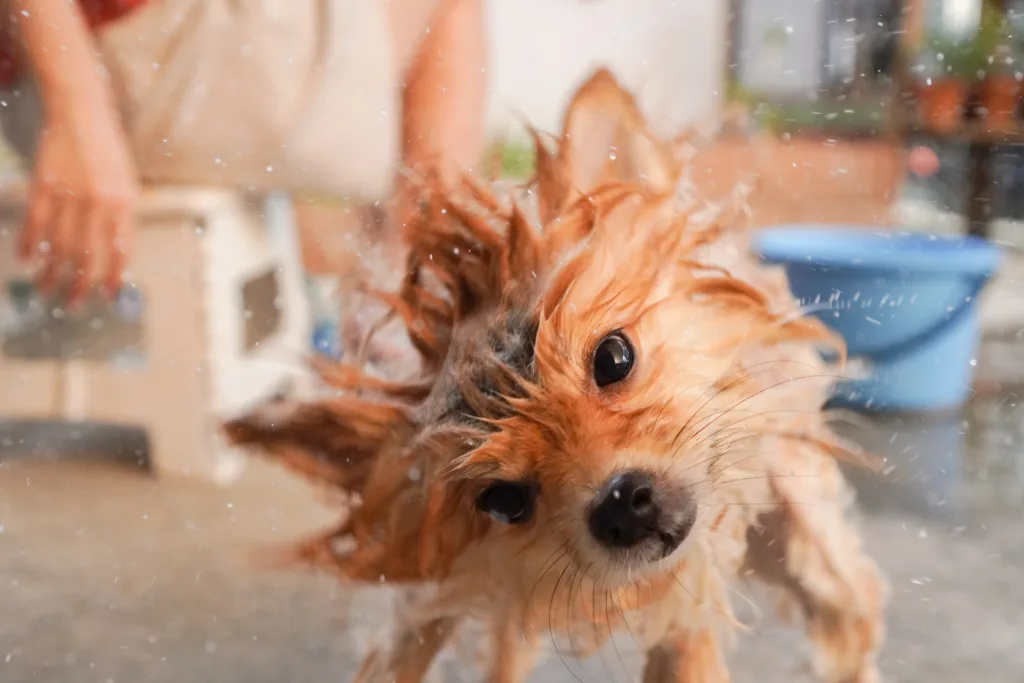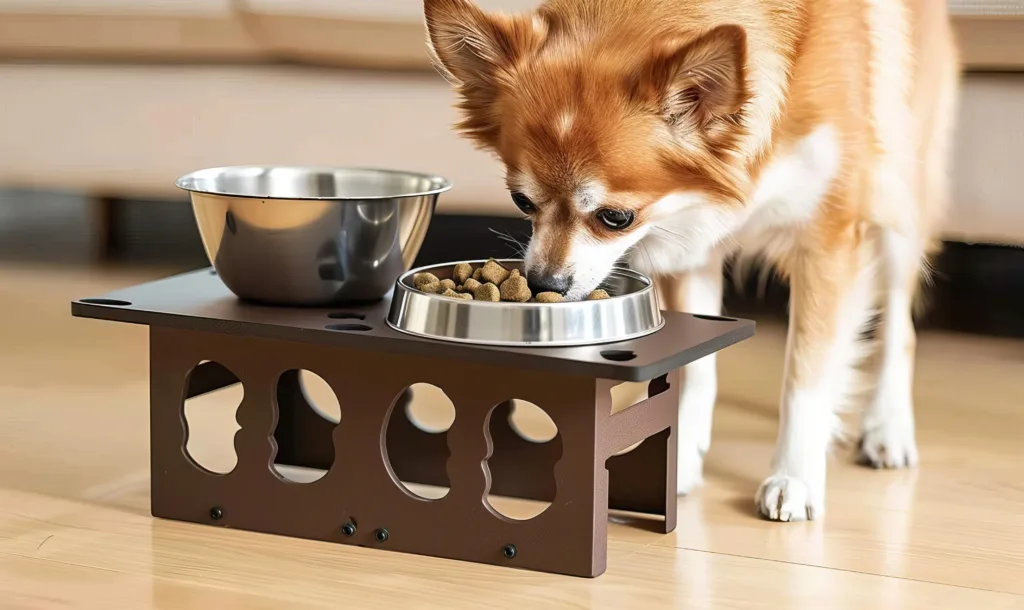Today, we’re exploring how elevated pet bowls can help sloppy eaters.
Whether your furry friend is dumping kibble or splashing in their water, we’re here to give you some tips on having a cleaner, happier doggy dinner!
Why Does My Dog Splash In His Water Bowl?
There are multiple reasons your pet might be playing with its bowl. For some pets, it is a great way to cool off after a hot day or lots of activity. Some breeds are specifically drawn to water and love getting some playtime anytime they can! Active dogs may enjoy seeing their reflection or want something to do out of boredom. This is typical dog behavior, but it’s not fun for a pet owner who wants to keep a clean, dry mealtime surface.

How To Stop Your Pet From Splashing Water Out Of Their Bowl
Start by washing and sanitizing the dish to ensure the water is fresh and has no growing bacteria or fungus. Fill the bowl with less water, encouraging your pet to drink, not play. Ensure your dog is not bored, and keep them busy with lots of activities and exercise. Keep their environment cool to ensure that they are not hot and need ways to cool down.

Make Some Changes
Try some preventive options, like getting a splash mat, water bottle, or small-scale water fountain. Some people have chosen weighted bowls so their pet’s bowls don’t shift or slide. Sometimes, changing your mealtime tools can help get your pet back on track and eating and drinking without extra splashing.

Consider An Elevated Pet Bowl
Many pet owners have chosen elevated dog bowls to prevent their pets from splashing water out of the bowls. Elevating your pet’s bowl will make it harder for them to splash and dump their water and will keep the water in the bowl where it belongs. Testimonials confirm that after choosing a raised bowl, their pets stopped splashing and enjoyed simply drinking and eating at their food and water bowls. Selecting an elevated dog bowl may be an excellent solution for your pet.

It is a typical problem, even if it is an unpleasant one. Consider choosing a preventive option that you think may work for your pet. Pay attention to the circumstances around them to ensure that it is not triggering their actions. If you’re still struggling with the problem, ask your local pet for advice specific to your pet.
We wish you all the best!



